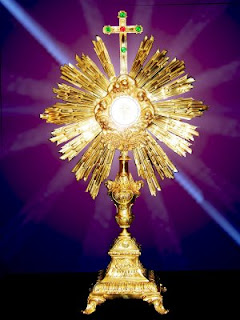This past week an unspeakable horror happened at the Emanuel African Methodist Episcopal Church in Charleston, South Carolina. 9 innocent people were senselessly shot down. They were there studying scripture and growing deeper in their relationship with God. Then, due to that terrible sin of hate and racism, they were shot down in cold blood by someone who hated them only because of the color of their skin!
I may be naive, but I find it amazing that racism and hatred like this still exists in the 21st century. More than 2,000 years ago, Jesus taught about love of God and love of neighbor, "'Teacher, which commandment in the law is the greatest?' He said to him, 'You shall love the Lord, your God, with all your heart, with all your soul, and with all your mind. This is the greatest and the first commandment. The second is like it: You shall love your neighbor as yourself. The whole law and the prophets depend on these two commandments.'"(Matthew 22:36-40) Are we doing what Jesus expects us to do? We are called to love God and our neighbor. We are to love our neighbor regardless of how they look or how different they may seem to be. We are called to accept and love them as people created in the image of God.
Then Martin Luther King, during his great speech more than 50 years ago said, "I have a dream that my four little children will one day live in a nation where they will not be judged by the color of their skin but by the content of their character." Has that happened yet? I don't think so.
It is all our responsibilities to remove hatred, racism and violence from ourselves and from the society we live in. We need to start with ourselves and examine our attitudes towards others that may be different than us. People are not born racist, they learn it. Further, it's our responsibility that the children in our lives are taught to love and respect all people.
Let us pray for the victims of those that died at the Emmanuel AME Church. May their souls and the souls of all the faithful departed rest in peace. Further let's pray for their families who struggle to deal with such a loss. Finally, let's pray for those that hate. May God remove this hatred from them, and replace it with love and respect for all people that are made in His image.
Ordination at St. Patrick's Cathedral
June 19, 2010
Friday, June 19, 2015
Saturday, June 6, 2015
The Feast of Corpus Christi
Scripture readings for the Feast of Corpus Christi can be found at http://usccb.org/bible/readings/060715.cfm
There is a marble staircase outside St. John Lateran
in Rome. It was a gift from Constantine the Great to the Holy See in 326. It is
no ordinary staircase. It is believed to be the steps Jesus climbed to the
judgment hall of Pontius Pilate after his scourging. It is now covered with
wood for protection; however, there are holes in the wood revealing not only
the marble, but allegedly it reveals the drops of Jesus’ blood. Pilgrims ascend
the steps on their knees. They believe that they are near the blood of Christ.
Today’s feast of the Body & Blood of Christ
commemorates the Real Presence of Jesus Christ in the Holy Eucharist. We, as
Catholics, believe that we receive Christ, body and blood, soul and divinity
under the appearance of ordinary bread and common wine. This feast was
established in 1264. At mass, we drink the blood of Christ.
This belief is based on what we read in Scripture. In
the gospel of St. Mark, we read, “While they were eating, he took bread, said the blessing, broke it, gave it
to them, and said, ‘Take it; this is my body.’ Then he took a cup, gave thanks,
and gave it to them, and they all drank from it. He said to them, ‘This is my
blood of the covenant, which will be shed for many.’” (Mark 14: 22-24)
The last
supper Jesus shared with his disciples is intended to be understood as a
Passover meal. Mark’s Gospel is more interested in focusing on the new meaning
Jesus will give to this meal. This final meal Jesus shares with His disciples
looks back to the great liberating event of the Passover. It was then that God
freed the people from the domination of Pharaoh.
This meal
focuses also on the present moment when Jesus declares that this bread and this
wine become his presence in terms of a new covenant sealed in his blood. And it
looks forward to the end of time when such table fellowship will be experienced
in the messianic banquet in the Kingdom of God.
The
gospel does not give us a systematic understanding of the Eucharist. Instead,
it shows us Jesus right before he was to go to his death. He gathers his
disciples within the context of something very old (Passover) to give them
something very new (the Eucharist). He creates for them a new covenant. These
disciples must carry on the work of Jesus. They will be able to do that work
through the empowerment of his presence. The Eucharist is always an encounter
of the people of God with the powerful presence of Jesus.
We, like
the first disciples, encounter the REAL presence of Jesus each time we receive
Holy Communion at Mass. We then are able to go into the world, nourished by His
body and blood, to bring the Good News of Jesus to a world that needs His peace
and presence.
We may
not approach the altar on our knees as pilgrims do on Rome’s sacred steps.
However, we can pray that we have their reverence for Christ’s sacrifice. They
may be viewing drops of Christ’s blood. We are consuming the life-giving blood
and body of Christ!
Subscribe to:
Posts (Atom)
